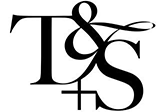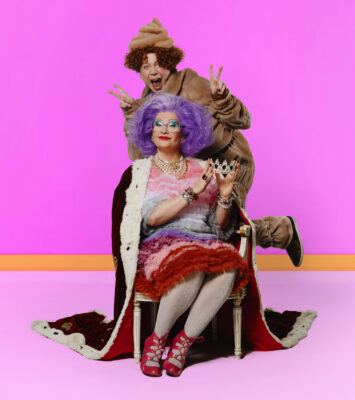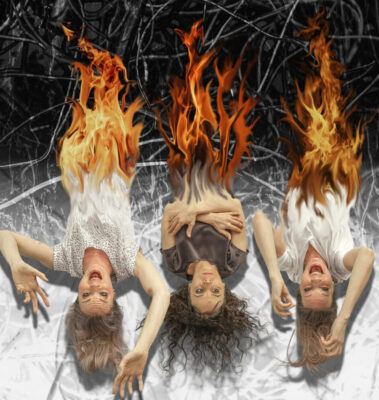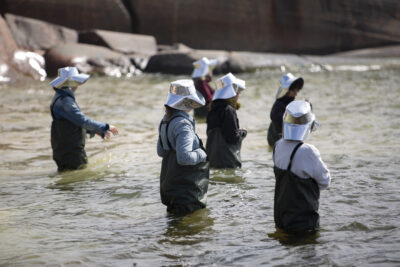Review of Baltic Circle 2013
by Mark Brown
Over the course of 19 years as a professional theatre critic I have
attended innumerable programmes, at 39 distinct festivals and
showcases, in 25 countries, on four continents. I can say honestly,
and without hesitation, that the 2013 edition of the Baltic Circle
festival in Helsinki is the worst festival programme it has ever been
my misfortune to encounter.
I saw seven of the nine productions in the programme and was
absolutely astonished by the low artistic level of the majority of the
shows. Festival director Eva Neklyaeva had clearly decided upon a
programme devoted entirely to devised work, leaving no room whatsoever
for the scripted play. That is not necessarily a problem, as long as
the devised work is curated carefully to ensure a high quality.
Based upon my own experience of international theatre, I could
easily have proposed nine shows, by such collective, devising
companies as Song of the Goat (Poland), Akhe (Russia), Derevo
(Russia), Farm in the Cave (Czech Republic), Victoria (Flanders,
Belgium), Forced Entertainment (England) and Untitled Projects
(Scotland), which would, I feel confident, have provided Baltic Circle
with critical and audience acclaim. So, what went wrong?
Of the seven shows I saw at Baltic Circle 2013, only those by
Finnish theatre maker Juha Valkeapää and Icelandic company Kviss Búmm
Bang (both of which I will comment on later in this article) should
have been allowed anywhere near a serious international theatre
programme (although I hear good things about Jacob Wren’s Every Song
I’ve Written, which I did not see). The remaining five shows created a
picture of a festival which had been programmed, not according to the
quality of the work (indeed, I wonder how many of the shows Ms
Neklyaeva had actually seen), but on the basis of an ideological
commitment, not only to devised theatre, but to its most postmodern
manifestations.
What do I mean by this? I mean that much (too much, in my opinion)
contemporary devised theatre, ”live art”, ”performance art” (call it
what you will), is driven by the postmodern notion of cultural
relativism (”every kind of cultural expression is equally valid”).
Ironically (and the postmodernists consider themselves the masters of
irony), this faux-democratic idea (in which a man wearing a hooded top
staring into a bucket of water for several hours[1] is considered as
legitimate as a re-envisioning of a Shakespeare play by Robert Lepage)
leads, not to the inclusive and egalitarian art the artists imply,
but, quite the reverse, to arrogant works which treat their audiences
with contempt.
No work at Baltic Circle 2013 (perhaps no work I have ever seen)
better exemplifies this pernicious postmodern arrogance than Porn of
Pure Reason, which was given the privilege of first position in the
festival programme. A production of extraordinary intellectual and
artistic laziness, and absolute contempt for its audience, this work
by Pekko Koskinen (from Finland) and Markus Öhrn (from Sweden) might
be better entitled Porn for No Reason or, in the context of the
festival, Porno in Porvoo.
Driving its audience by coach from Helsinki to Porvoo (some 50
kilometres away), the minimal performative aspect of the piece was
highlighted on the journey, as two hostesses whispered flirtatiously
in the ears of each audience member simple questions about their
relationship status and whether or not they liked porn. So far, so
banal.
At Porvoo, in a disused cinema building, Öhrn gave a ludicrously
pompous speech about the only performance of the evening being the one
that happens ”in our heads”. There then followed clips of such
hardcore pornographic standards as fellatio, penetration and bondage.
When the audience was moved into a second room, I refused Öhrn’s
encouragement to the audience to sit down. Even before the Swedish
”artist” made the absurd suggestion that we might consider the people
we are about to see ”heroes” who are pioneers in the use of the human
body, I was already certain that he and Koskinen were going to screen
acts of bestiality and/or sexual violence. I was correct, of course,
and I chose to leave the room, spending the remainder of the
performance in the bar next door to the venue, waiting for the coach
back to Helsinki.
As a theatre critic, I normally consider it a professional
obligation to stay in a show until the end. However, in this case, I
felt that the ”artists” were so disregarding of their audience that I
was in no way duty bound to remain in the performance space,
particularly as I found the images they were screening predictably
degrading (of both the participants in the film and the viewer) and
nauseating.
I was in no way surprised by either the content or the lack of
artistic imagination (and, indeed, effort) involved in the piece,
because I had, earlier in the day, attended part of a public
discussion with Öhrn and Koskinen at Q-Teatteri in Helsinki. There I
found the two men speaking in the most hollow, pseudo-intellectual
terms about pornography. Koskinen was asked about the much-vaunted
”research” for the piece. He cited an article about porn which he said
was very influential on the show, but he could name neither its title
nor its author (he promised the woman who asked the question that he
would ”check it up on the internet” and get back to her). So much for
research!
In discussion with me, Öhrn insisted, without irony, that the porn
industry was merely ”responding to demand” and that it was becoming
increasingly democratic (on account of its dissemination on the
internet and the increased possibilities for the making of amateur
porn). I argued that porn was big business and, like all other major
capitalist industries, it was not simply ”responding to demand”, but
sought always to shape and create demand and to commodify desire
(including through the worrying phenomenon of young children,
especially young boys, accessing hardcore pornography online, and
developing, before or during adolescence, dangerously distorted ideas
about human sexuality, and about girls and women in particular). Öhrn
and Koskinen refused to engage with this argument, insisting that
they, like their show, wanted to ”avoid politics”.
There is in this stance of Öhrn and Koskinen (which is, of course,
thoroughly political) either extreme naivety or extreme
disingenuousness. Every major corporation and every major industry –
from those dealing in armaments, tobacco, alcohol and gambling, to
those selling clothes, food and travel – argues that it is only
”responding to demand”. Whether or not they are aware of it, Öhrn
and Koskinen have, in their insistence on the exceptionalism of the
porn industry, become propagandists for what is, first-and-foremost
and overwhelmingly, a highly profitable, multinational capitalist
business. Behind their pseudo-radical, ”anything goes” libertarianism
there lies a complete capitulation to right-wing, neo-liberal
economics and neo-conservative politics.
The disingenuousness of the show is deepened by the fact that it is
predicated on the idea, expressed by Koskinen at the public
discussion, that porn is the most widely disseminated form of cultural
expression in the world today. If that is the case (and there is no
doubt that it is extremely widespread), surely any cognisant adult
could be expected to know which kinds of pornography are out there,
and choose whether or not to look at them accordingly. That being so,
screening regular hardcore porn, followed by porn which is both
bestial and violent, to a theatre audience, with minimal artistic
input, on the pretext that it will ”show people what’s out there” and
promote discussion of pornography, is the hollowest of postmodern
gestures. As so often with postmodern art, what purports to be an
artistically and politically radical piece, with the audience
democratically at its centre, turns out to be a deeply reactionary
work in which the ”artists” attempt, with customary arrogance, to
operate a tyranny over their audience.
Whilst Öhrn and Koskinen’s piece was by far the most ridiculous,
slovenly and inartistic (indeed, anti-artistic) production in the
festival programme, the works by Russia’s Post Theatre (I Am Free),
Oblivia of Finland and the UK (Super B), Sweden’s Poste Restante
(Civilization and Its Discontents) and the Finnish collaborators
behind Vibes, all exhibited frustrating traits of postmodernism. I Am
Free and Vibes epitomise, in their literal effortlesness, the cultural
relativist fallacy that anything one puts on a stage, no matter how
thin it is in its conception and/or performance, attracts an immediate
cultural validity. The works by Oblivia and Poste Restante at least
have the virtue of having involved some attempt at artistic structure
(even if Oblivia’s postmodern project is to then deconstruct it).
However, in both cases, and in different ways, the structural concept
is too weak. Oblivia’s attempt to play with the idea of ”bad theatre”
is expressed in an uninteresting, insufficiently funny artistic
monotone which its initial structure (its scaffold, if you will) is
too weak to support. Post Restante’s proclaimed effort to break down
notions of social status through assigning the audience roles
according to their tastes, first, in cakes and, then, in sexuality,
implodes due to the cold, humourless, pseudo-managerial facade the
company adopts (they simply are not good enough performers to carry it
off) and the stupidity of their multiple choice questionnaire about
sexual preferences (which is so banal that, refusing to complete it, I
preferred to accept an invitation to lunch, rather than stay for the
remainder of the performance).
Considered together, the shows reviewed above amount to an absolute
disgrace for Baltic Circle 2013. Needless to say, having reviewed
theatre throughout Scotland, the UK and around the world for almost
two decades, I have seen a lot of sub-standard productions, but never
have I come across a festival programme so conceptually flawed and so
ill-considered as that I endured in Helsinki.
That said, I take some solace from Gala – A Celebration of Minority
Groups (by Kviss Búmm Bang) and Executed Stories (by Juha Valkeapää).
The former, whilst it never quite achieves any real social or
political depth, is charming in its playfulness (for example, setting
oppressed social groups, such as Roma Gypsies, alongside rarely
considered minorities, such as ”sexually active single women”). Its
clever device for creating interaction between strangers in its
audience has an inventiveness and a humanity from which Post Restante
could learn a thing or two.
By far the best show in the programme, however, was Valkeapää’s
Executed Stories. The fact that it was up against such poor
competition should take nothing away from the achievements of this
fascinating show. In stark contrast to the vacuous Porn of Pure
Reason, this piece about the history and contemporary reality of the
death penalty really is brilliantly researched. Unlike most shows in
the festival, rather than adopting an arrogant posture in relation to
its audience, this work is intelligently nuanced and humane in its
attitude to the theatregoer; the willingness of audience members to
take part in abstract reconstructions of old execution techniques (in
which, for reasons of abstraction and history, they are not
implicated) contrasts starkly with people’s refusal to become involved
in the re-enactment of the execution by stoning of a woman found
guilty of adultery in present day Iran (a contrast which, one
suspects, is very much Valkeapää’s intention).
Describing his show as a ”lecture”, the Finnish artist explores his
subject without polemic (he never expresses a direct opinion on the
death penalty, and exhibits a startling sympathy for many of the
executioners). He tells his extraordinarily varied set of stories with
an interestingly unspectacular-yet-engaging verbal delivery, and with
a plethora of clever performative techniques. In truth, Baltic Circle
2013 was hardly worthy of such a fine production.
Mark Brown is theatre critic of the Scottish national newspaper
the Sunday Herald, and Scottish critic for the UK national newspaper
the Daily Telegraph. He is a member of the executive committee of the
International Association of Theatre Critics and a director of
seminars for IATC. He is also a member of the editorial board of the
IATC’s webjournal Critical Stages. He is editor of the book “Howard
Barker Interviews 1980-2010: Conversations in Catastrophe” (Intellect
Books, 2011) and a contributor to the collection “Howard Barker’s Art
of Theatre”, edited by David Ian Rabey and Sarah Goldingay (Manchester
University Press, 2013). He is a doctoral researcher in theatre
studies at the University of Dundee and a teacher at the Royal
Conservatoire of Scotland. He lives in Glasgow.
[1] I have personally seen such a performance, during an edition of
the now defunct National Review of Live Art in Glasgow.
|
|







